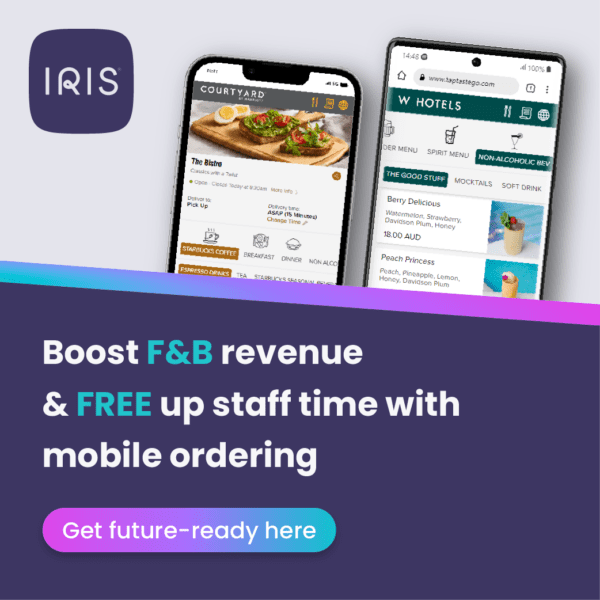 You’ve just offered assistance to one of your guests or customers, and they say, “Thank you!” In that very moment, what is your response to this expression of gratitude?
You’ve just offered assistance to one of your guests or customers, and they say, “Thank you!” In that very moment, what is your response to this expression of gratitude?
Perhaps you reply with the traditional “You’re welcome.” But perhaps you’re in the habit, instead, of saying “No problem” — or “Not a problem” — or “No worries.” While these latter responses might be appropriate for more informal personal settings, there are very good reasons to avoid them in the context of customer-service interactions. Here’s why ….
Problems & solutions: The currency of customer service
The dynamic central to customer service is that a customer/guest has a problem–a concern, a confusion, a complaint–that they bring to the attention of a staff member. The staff member’s job is to provide that customer with the solution to their problem: to resolve the complaint, to clarify the confusion, to remedy the concern. The first step in addressing a customer’s concern is to take it seriously–to validate the problem. The second step is to provide the solution to that problem.
Once you’ve offered a solution to the guest’s problem, and they say, “Thank you” — to then respond to this “Thank you” by saying “Not a problem” or “No problem” really makes no sense, and tends to undermine the basic assumptions of the customer service relationship.
When you say, “No problem,” the customer can hear this in one of two ways. They might hear it as meaning that what they considered to be a problem wasn’t really a problem, or not as great a problem as they thought it was. In a subtle way, this delegitimizes the customer’s concern, perhaps making them feel a bit silly or inept for even bringing it up. It also downplays the skillfulness involved in the solution that you offered.
The second way that the guest/customer might hear, “No problem,” is as meaning that it was not a problem for you to provide a solution to their problem. And this points to a confusing reversal of the currency of customer service. Of course, your solution wasn’t a problem–because it was the solution to the customer’s problem! And it’s exactly your job to provide such solutions. While it might be your intention–in saying “No problem”–to put the customer at ease, it’s just as likely to create a sense of agitation, confusion, or lack of closure.
The phrase “No problem” can also harbor the implication that you’ve just done someone a big favor–something you really didn’t have to do, that was a bit inconvenient, a bit of an imposition, but you did it anyway. And perhaps now, in saying “Hey, no problem,” there’s also the unspoken assumption, “I know you’d do the same for me.” While this may be an appropriate dynamic among friends, or between business colleagues, it really isn’t appropriate for a customer service relationship. When we serve our guests, we’re not doing them a favor–for which we expect a return, in kind, somewhere down the line. We’re doing our job, hopefully in as dignified a manner as possible.
What to say instead: Dignified customer service
Once you’ve convinced yourself that “No problem” or “Not a problem” are not ideal ways to respond to a customer that has just thanked you, the obvious question is, how do I respond? And here the traditional “You’re welcome” or “You’re so welcome” are an excellent choice as your default response. When you say “You’re welcome,” you’re expressing to your customer, You are welcome to my help (both today and in the future)–in a similar way to how you might say to a friend, You are welcome to our home.
This signals clearly that you graciously accept the expression of gratitude, and that you were happy to help. It dignifies the customer service relationship, and acknowledges the basic currency of the interaction: namely, guests are expected to have questions and concerns; and you are expected to have answers and solutions.
Closely related to “You’re welcome” is “With pleasure” (avec plaisir in French, and con gusto in Spanish). The idea is the same: you’re politely receiving the thanks, and expressing your happiness at being able to be of service. This is beautiful!
Along the same lines as “With pleasure” is the simple and direct “I’m glad I could help” or “We’re always happy to assist you.” And then, as the cherry on the customer service cake, you might even add: “Please let us know if there’s anything else that you need.”
Along with these verbal responses–or perhaps occasionally in lieu of them–are some powerful nonverbal ways of acknowledging a “Thank you”: a nodding head, an authentic smile, a slight bow, or hands brought together in a namaste/prayer position, as if to say: You are the honored guest, and it is indeed an honor to serve you.
Words matter: Maximizing business success
Responding to a customer’s “Thank you” with a casual, downplayed “No problem” or “Not a problem” misses the opportunity to acknowledge your skillfulness and selfless generosity–as part of a job well done–and to dignify the exchange with an elegant “You’re so welcome” or “With pleasure.”
In highly competitive environments, little things like this matter. When there are dozens if not hundreds of hotels, restaurants, health clubs, and spas to choose among, customers can be very discerning. And this means that creating the most positive experience possible for your customers, even in the smallest of details, really does yield tangible results.
And the truth is that words matter–particularly the final words of an exchange–which can leave a lasting impression, even if just a subtle one, that effects the customer’s future behavior in relation to your business. It may well determine whether or not they return to your hotel, restaurant, health club or spa. If they feel that their concerns were taken seriously, and their expressed gratitude graciously received, chances are better that they’ll be motivated to come back–and will encourage their friends and associates to do the same.


















